DIY Natural Weed Killer
Most gardeners will probably agree that they do not want weeds in their gardens and that they would prefer to use more natural methods to get rid of them and avoid resorting to chemicals. After all, you all want healthy plants and vegetables and an outdoor space that is safe for you, your families, pets, and all the insects we need and want to protect. So, how does one set about making a DIY weed killer that is natural and effective and usually inexpensive?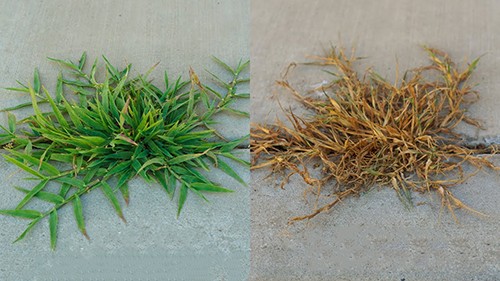
There are in fact a surprising number of options. First, though, you need to think about where the weed killer will be used. Even if you use natural, homemade weed killers, some will affect the soil to a degree. For example, some DIY solutions change the pH or acidity levels in the soil which may impact on what kinds of plants you can grow – if any – in that area in future.
Weed Killer For Areas You Will Be Replanting In
You have several options when it comes to killing weeds without damaging the soil or the microorganisms and organisms that live in it:
Vinegar
This common household ingredient works on small or young weeds. However, while you can use any brand, it must contain more than 5% acetic acid to be effective.
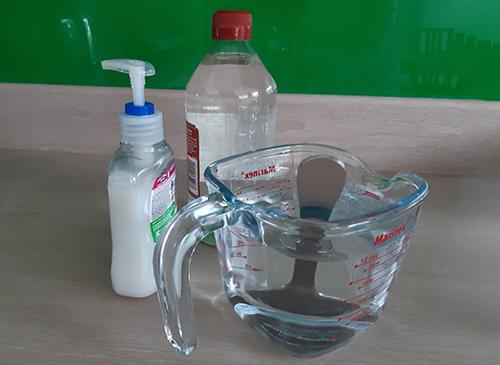
Recipe:
- ½ gallon / 2 ¼ liters of white cooking or distilled vinegar.
- ½ gallon / 2 ¼ liters of water.
- 1 tablespoon vegetable oil or liquid soap which helps the solution coat the leaves.
Instructions:
- Place the mixed solution into a spray bottle.
- Set the nozzle to ‘jet’ or ‘stream’ and not ‘spray’ so you have better control over where the solution goes.
- Spray onto the leaves being careful not to spray any non-weeds.
- Do not use too much so that the soil does not soak up a lot of solutions.
- Use it on a sunny or warm day as it speeds up the process.
Cautions and notes:
- Vinegar will burn and kill any leaves it is sprayed onto. For this reason, it should not be used on lawns or close to plants.
- If you soak the soil with vinegar it will change the acidity levels of the soil. Too much and you will not be able to grow anything there.
- It doesn’t destroy the roots, only the leaves.
Mulch And Soil Covering
Like all plants, weeds need light and space to grow. By using something over the soil the blocks light and smothers growth you can suppress weed growth without affecting the soil or other plants. There are several options:

- You could use bark, wood chips, or straw. However, this can be costly unless you can come to an arrangement with a local sawmill, lumber yard, or farmer. Simply spread a layer over the area involved. With small pieces of bark, the layer should be 2 inches / 5 cm thick. With straw and larger pieces of bark you need to spread it 3 – 4 inches / 7 ½ – 10 cm thick.
- Another option is the garden membrane or fabric. Laying it isn’t easy if you have plants to accommodate and, like bark, it may be expensive. In addition, the membrane also needs to be covered with soil or mulch.
- An inexpensive and effective covering is newspaper or cardboard. To stifle weed growth by cutting out light and air, you need a layer of two sheets of cardboard or four of the newspaper. As with membrane, this layer also needs to be covered so that it is not unsightly.
All these methods are 100% eco friendly and the bark, wood chips, paper, straw, and cardboard all break down well. As the weeds are unable to germinate or seed, the area should stay weed-free for at least a season, unless there are airborne seeds that land on the surface and germinate.
Boiling Water
Pouring boiling water on small/young weeds or those with shallow root systems should kill them. However, this is not a solution if the boiling water does not reach and kill the root; only the leaves will die, and the weed will grow leaves and shoots again.
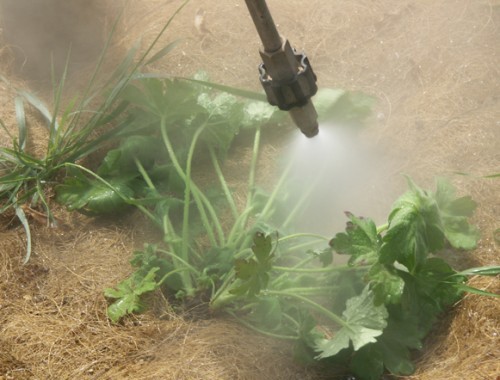
The advantages of boiling water treatment are that it is free, quick, and natural. However, if you pour boiling water on or near non-weeds, they will also be damaged or even killed. Also, any organisms in the soil will be ‘cooked’ and destroyed.
WEED KILLERS FOR AREAS YOU WILL BE NEVER GROW PLANTS OR VEGETABLES IN
These DIY weed killers are either so strong or alter the soil so markedly, or both, that you will not be able to use the soil again for shrubs, flowers, or vegetables.
For this reason, it is important to be cautious about where you use them.
Vinegar Plus
This is an extremely strong solution that will leave soil unusable, sterile, and dead.
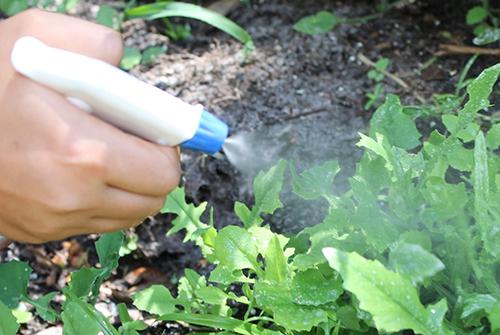
Recipe:
- ½ gallon / 2 ¼ liters of horticultural vinegar (20% acetic acid).
- ¼ gallon / 1 liter of water.
- ¼ gallon / 1 liter of lemon juice (contains high levels of citric acid).
- 1 tablespoon vegetable oil or liquid soap.
- 1 – 2 tablespoons of rubbing alcohol or of inexpensive gin or vodka (any brand).
- 1 cup of table salt.
Instructions:
- Mix the solution thoroughly
- Place the solution into a spray bottle or dedicated watering can.
- Spray or pour onto the weeds.
- Use the mixture on a sunny or warm day as it speeds up the process.
This solution will penetrate the soil, kill the roots, and significantly raise the pH or acidity level of the soil. In addition to preventing any weeds – or any other plants – from growing in the area again, this potent solution also kills soil organisms.
Salt
You could pour dry table salt directly into weeds. However, this can be a slower way to use salt as a weed killer.
A liquid solution is usually quicker and more effective.
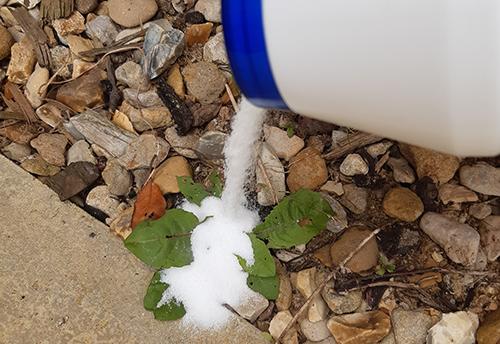
Ingredients:
- 3-parts iodized or un-iodized table salt (not Epsom salt, rock salt, or sea salt).
- 1-part vinegar or boiling water.
- 1 teaspoon of liquid soap.
Instructions:
- Stir the mixture well.
- Leave it to stand for 10 minutes to ensure most of the salt is dissolved. It does not matter if not all the salt dissolves completely.
- Pour the solution directly onto the weeds.
Be careful about how and where you use these substances or solutions so that you do not damage non-weeds or yourself. Even vinegar can result in skin irritation and – in some people – an allergic reaction.
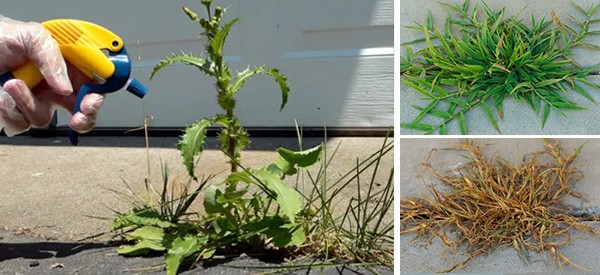
Comments
Post a Comment